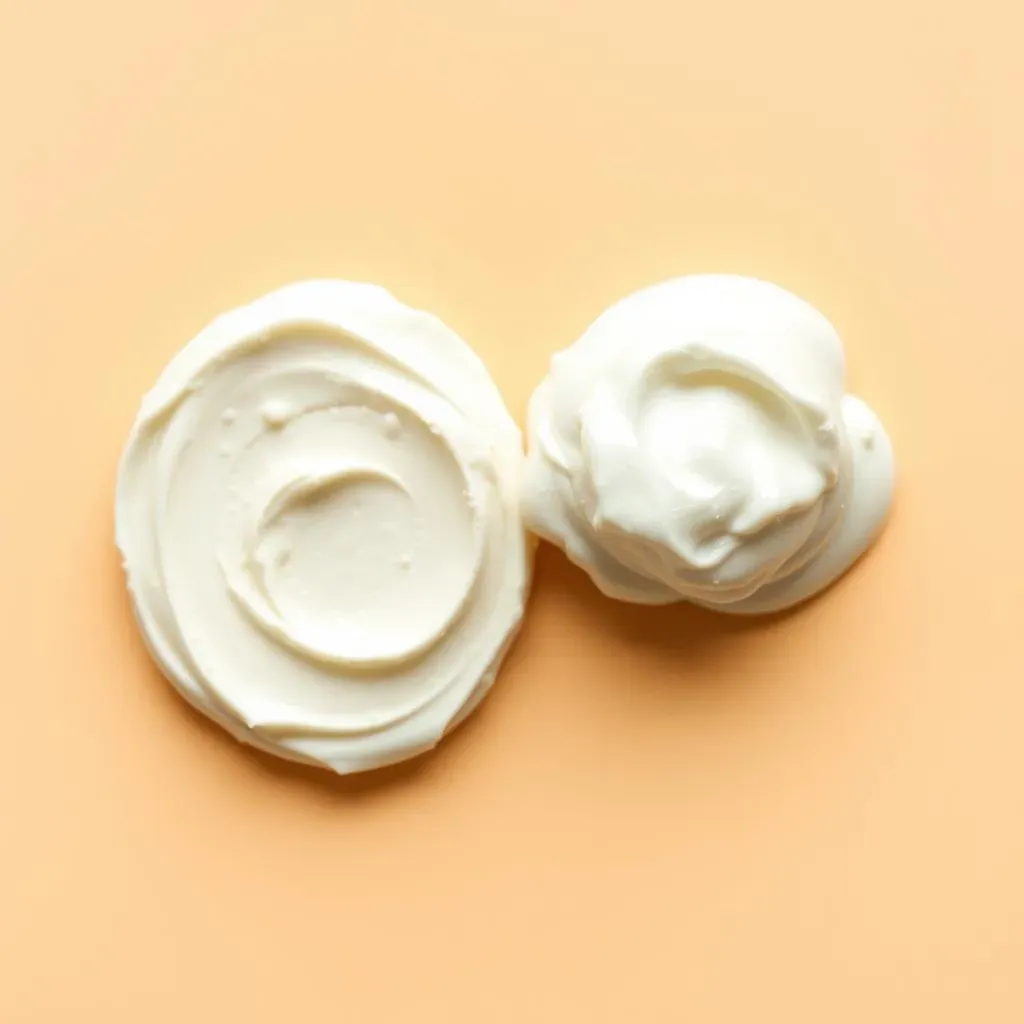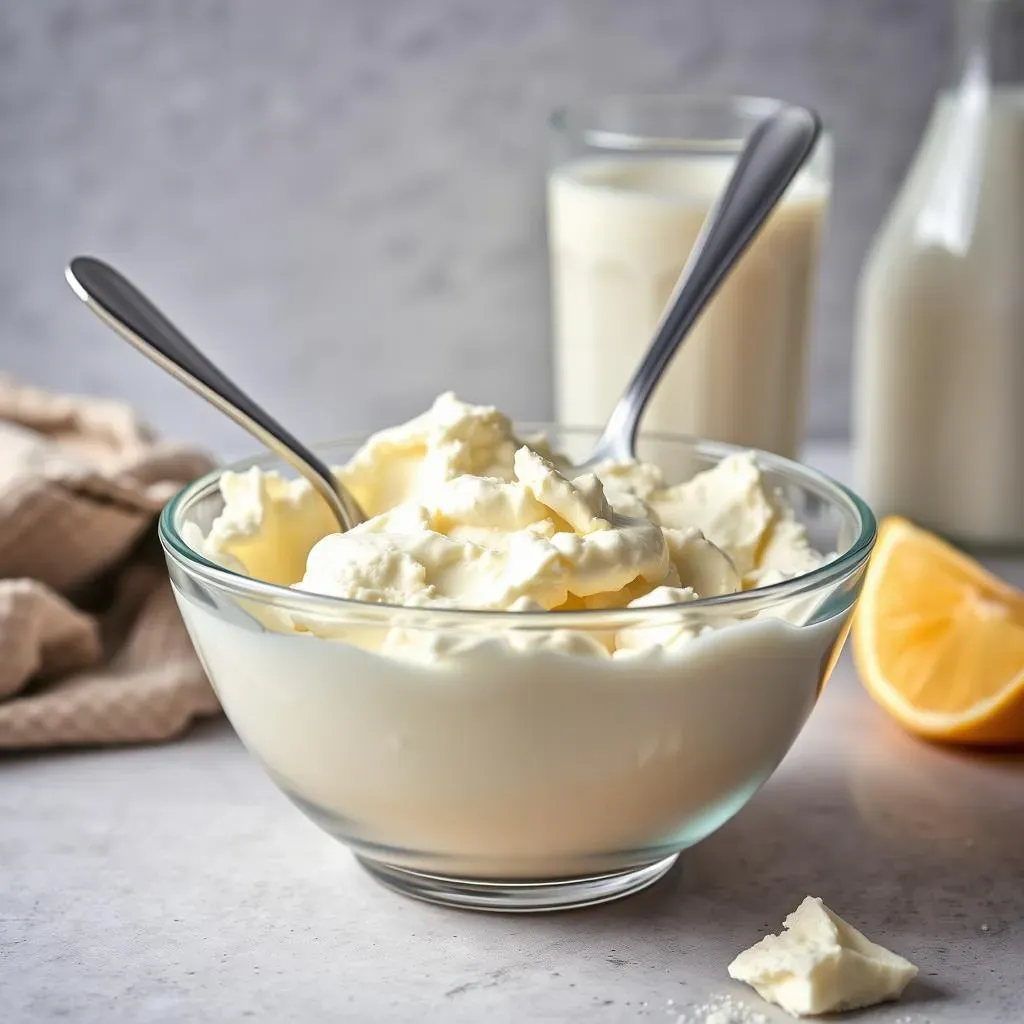Table of Contents
Ever found yourself in the middle of cooking, only to discover you're out of sour cream? It's a kitchen crisis we've all faced. But what if I told you that creamy, tangy goodness isn't lost? Cream cheese, that staple in your fridge, can be a surprisingly good stand-in. This article isn't just about swapping one ingredient for another; it's about understanding the nuances of flavor and texture, and how to make the best of what you have. We're going to explore the key differences between cream cheese and sour cream, then get into the nitty-gritty of “how to substitute cream cheese for sour cream” effectively. From simple swaps to clever adjustments, I'll show you how to keep your recipes delicious, even when you're missing a key ingredient. We’ll also look at some real-world examples, so you can confidently make these substitutions in your own kitchen. Let's get started and turn that kitchen mishap into a culinary win!
Understanding the Differences: Cream Cheese vs. Sour Cream

Understanding the Differences: Cream Cheese vs. Sour Cream
The Texture Tango
Okay, let's talk textures. Cream cheese, that thick, spreadable stuff, is like the dense, rich cousin in the dairy family. It's got a smooth, almost buttery consistency that makes it perfect for bagels and cheesecakes. Sour cream, on the other hand, is more like a cool, silky dance partner. It's got a looser, lighter feel and a noticeable tang that wakes up your taste buds. Think of cream cheese as a solid, dependable base, and sour cream as a bright, zesty addition. One is great on its own, the other is awesome with a little extra flavor. It's all about those different vibes, right?
Flavor Face-Off
Now, onto the flavor battle! Cream cheese is like that friend who’s always calm and collected – it’s mild, slightly sweet, and very creamy, not really showing off. Sour cream, however, is the one who brings the zing and zest to the party. It's got that characteristic tangy flavor thanks to lactic acid, which gives it that delightful pucker-worthy kick. That tang is what makes sour cream the go-to for things like tacos and baked potatoes. Cream cheese is more of a smooth operator, while sour cream is the life of the flavor party. You can't really sub them without noticing the difference.
Characteristic | Cream Cheese | Sour Cream |
|---|---|---|
Texture | Thick, dense, smooth | Light, silky, looser |
Flavor | Mild, slightly sweet, creamy | Tangy, zesty, acidic |
Best Uses | Spreads, cheesecakes, frostings | Toppings, dips, sauces |
Composition Considerations
Finally, let's peek at what they're made of. Both start with cream, but the journey they take is different. Cream cheese gets its signature thickness from the addition of stabilizers and a higher fat content. Sour cream, on the other hand, gets its tang from the addition of lactic acid bacteria, which also results in the lower fat content and looser consistency. This difference in composition is why they behave so differently in recipes. Cream cheese is like the sturdy building block while sour cream is like the delicious glaze that goes on top. So, while they both hang out in the dairy aisle, they're definitely not twins!
How to Substitute Cream Cheese for Sour Cream: The Basics

How to Substitute Cream Cheese for Sour Cream: The Basics
The Softening Strategy
Alright, so you’re staring at that block of cream cheese, thinking "how do I make this act like sour cream?" The first step is softening it up. Cream cheese straight from the fridge is too dense and solid to mimic the light, silky texture of sour cream. Think of it like trying to spread cold butter – it just doesn't work. You need to give it a chance to relax. Let it sit out at room temperature for about 20-30 minutes, or if you're in a hurry, you can zap it in the microwave in short 10-second bursts, just be careful not to melt it. The goal is to get it pliable, like modeling clay, not a puddle.
The Thinning Technique
Now that your cream cheese is soft, it’s time to get it to that sour cream consistency. This is where the magic happens. We need to add some liquid to loosen it up. A little bit of milk, water, or even a splash of lemon juice can do the trick. Start with a tablespoon of liquid for every four ounces of cream cheese, and mix it in well. You will notice it start to transform from a thick block to a looser, more sauce-like texture. If it's still too thick for your liking, add a little more liquid at a time until it reaches the desired consistency. It's like making a paint – you add the thinner until you get the right flow. Just like that, you're one step closer to a successful substitution.
Step | Action | Why? |
|---|---|---|
1 | Soften the cream cheese | To make it pliable and easier to mix |
2 | Add liquid (milk, water, lemon juice) | To thin the cream cheese and achieve sour cream consistency |
3 | Mix well | To ensure a smooth and even texture |
RealWorld Applications: Using Cream Cheese as a Sour Cream Sub

RealWorld Applications: Using Cream Cheese as a Sour Cream Sub
Dips and Spreads: A Creamy Twist
Okay, let’s get real about dips. You’re planning a get-together, and you’re all set to make that amazing spinach artichoke dip, but uh-oh, no sour cream! Don’t panic. Softened and thinned cream cheese is your secret weapon. It brings that same creamy texture, just with a slightly less tangy flavor. Think of it as a subtle shift in taste, not a complete flavor overhaul. I've used it in my own seven-layer dip and nobody knew the difference. It gave a similar richness and body, and honestly, it was just as delicious. The key is to make sure you mix it well so it doesn't clump up. It's not a perfect match for sour cream, but it’s a darn good substitute in a pinch.
You can also use it in any kind of spread, for example, on a bagel, or as a replacement for sour cream in a sandwich. It's all about getting the right consistency and not overdoing it. Remember that cream cheese is denser than sour cream, so you should always start with a smaller amount and add more if needed. It’s like adding salt to a dish, a little bit at a time until you get the perfect flavor.
Baking: The Secret Ingredient
Now, let's talk baking. You might be surprised, but cream cheese can work wonders as a sour cream sub in many baked goods. Think about cakes, muffins, or even quick breads. Adding cream cheese can make your baked goods extra moist and tender. For example, I once made a batch of banana muffins, and I swapped out the sour cream for cream cheese, and they turned out incredibly moist and fluffy. The slight tang of sour cream will be missing, but the added richness more than makes up for it. This is especially great when you want a little bit more of a luxurious feel to your treats.
In recipes that call for sour cream to add moisture and a slight tang, using thinned cream cheese can help achieve a similar effect, although with a less pronounced tang. So, while it might not be a perfect sour cream replacement in every recipe, it's a fantastic option when you need a quick fix. It's all about knowing the nuances and making those small adjustments to get the best possible outcome. It's like being a scientist in your kitchen, experimenting until you find the right balance.
Application | How to Use Cream Cheese | Result |
|---|---|---|
Dips | Soften and thin with milk/lemon juice | Creamy texture with subtle flavor difference |
Baking | Soften and use as a direct swap | Moist and tender baked goods |